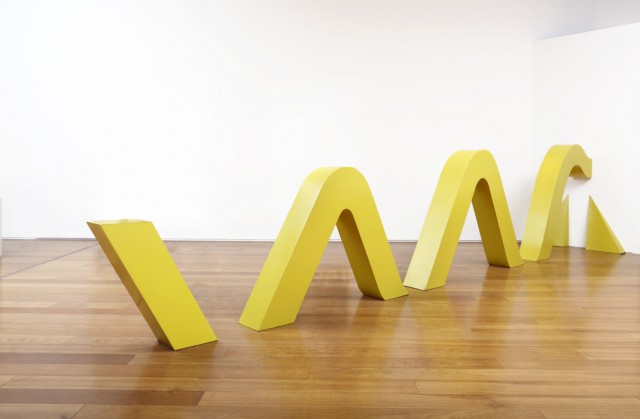
Lately it seems everything old is new again in the art world. With a recent blooming of revival shows at museums, galleries, and exhibition spaces around the world, Hyperallergic asks why there are so many revivals these days and comes up with some interesting answers. In March, the Neue Galerie put on the blockbuster “Degenerate Art” show for which the museum recreated the notorious 1937 show “Entartete Kunst” organized by the Nazi Party in Munich in its battle against cultural decay. For its summer show “Other Primary Structures,” the Jewish Museum restaged a 1966 exhibition that was the first US survey of Minimalism but from a global perspective. Last year, the Prada Foundation revisited a 1969 show “When Attitudes Become Form.” But what’s in it for us and what does it say about the curators presenting them?
“Unlike a book that I can read many times or a movie that I can see again and again, an exhibition disappears once it is over,” Jewish Museum deputy director Jens Hoffman told Hyperallergic. “Which means that a restaging can be incredibly important to give the audience a firsthand experience of seeing a historically important exhibition.”
While the trend is not exactly new (the Armory Show at the New York Historical Society has been restaged twice before and the Degenerate Art Show had an LA staging in the early 1990s), lately it seems to be gaining headway. The upshot for the contemporary viewer is the ability to check out oft-forgotten episodes in art history as well as simple hindsight and perspective that comes with time. But does the recent trend suggest that curators are out of steam?
“While these shows are informative — not to mention a boon to the market value of the works they feature,” writes Laura Mallonee, “it’s easy to wonder what they say about the current artistic and curatorial landscape. Have curators simply run out of ideas? In March, New York Times art critic Roberta Smith wrote about a similar fad of “rescuing artists from the past,” noting that galleries today dredge up lost artists “once or twice a season, if not more.” Even outside the world of art, people seem to be recycling ideas, from books-turned-movies like The Giver to belated sequels like the upcoming Dumb and Dumber To. Sure, nothing under the sun is entirely new, but might these shows confirm the nagging, nostalgic suspicion that we live in less revolutionary times than our forebears?”
Perhaps, in this case, we might heed the words of Marie Antoinette who once said, “There’s nothing new except what has been forgotten.”